Kelly Jensen's Blog, page 140
July 14, 2013
So You Want to Read YA?: Guest Post from Sarah & Laura of Clear Eyes, Full Shelves
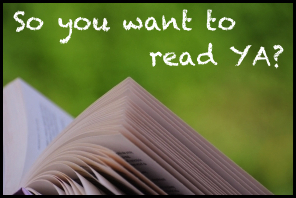
This week's guest post comes from a blogging duo who write some of the best, most thoughtful reviews and posts in the book blogging world: Sarah and Laura of Clear Eyes, Full Shelves.

So you want to read YA?
Recommendations from Sarah & Laura of Clear Eyes, Full Shelves.
While Clear Eyes, Full Shelves is not exclusively a YA blog, we read and review a ton of young adult fiction and love, love, love recommending the good ones. We really believe that there’s a YA novel for everyone--even for folks we have to trick into trying one own by sneakily forgetting to mention that a novel is “one of those teen book.” Here are our picks to help you find the young adult novel that’s will perfect match your tastes.
If your taste runs toward the literary...
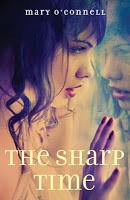
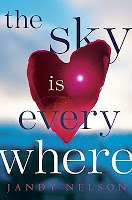
The Sharp Time by Mary O’Connell. This novel is not for everyone, but if you love to get lost in language and and a plot that softly tumbles forward, you won’t find much better than The Sharp Time.
The Sky is Everywhere by Jandy Nelson. Jandy Nelson’s debut is another book that’s not for everyone, but the combination of gentle magical realism and an emotion-filled story that lingers long after you turn the last page.
If you want to visit the ups and downs of hometown nostalgia...
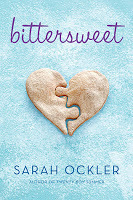
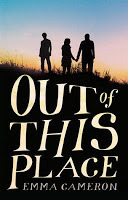
Bittersweet by Sarah Ockler. This is probably Laura’s favorite book in recent memory, as it captures so much about her hometown of Buffalo, New York (from which author Sarah Ockler also hails). It captures that simultaneous love of where you’re from and the growing knowledge that you just have to leave in order to move forward.
Out of This Place (known as Cinnamon Rain in Australia) by Emma Cameron. We’re sneakily slipping in a novel in verse here, but it’s a very approachable verse novel, so don’t fear if you’ve never tried one before. This one tells the story of three teens who escape their small Australian town for various, heartbreaking, reasons.
If you loved The Hunger Games, but find yourself disappointed by the copycats...
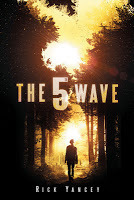
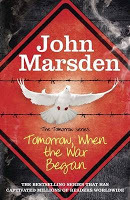
Tomorrow, When the War Began (series) by John Marsden. This seven-book series about a group of Aussie friends hiding in the bush after an invasion by a foreign army sent both of use down a rabbit hole of obsession as we had to know what happened to Ellie and her friends.
The 5th Wave by Rick Yancey. This is a 2013 release and absolutely, positively the real deal. Nuanced characters, multiple points-of-view and moral ambiguity set the stage for for a complex story about the aftermath of an alien invasion.
If you’ve written off paranormal...
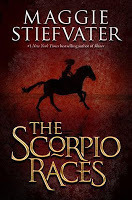
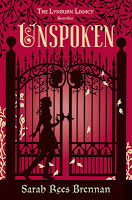
Unspoken by Sarah Rees Brennan. This gothic tale has it all: humor, creepy houses, kissing and a diverse cast of characters. As a bonus, if flips the idea of soulmates that’s so prevalent in YA on its head in a totally new way.
The Scorpio Races by Maggie Stiefvater. All of us at Clear Eyes, Full Shelves love Maggie Stiefvater’s writing--it’s always lyrical and oh so unique. The Scorpio Races is particularly special because it twists the paranormal genre into something completely different.
If you’d like to remember what it’s like to be a teenager...
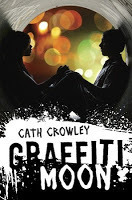
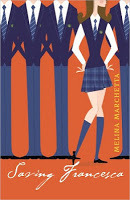
Graffiti Moon by Cath Crowley. It’s one night and possibilities abound in Cath Crowley’s story about a group of arty recent high school graduates in Melbourne. This is one of those YA novels that everyone we’ve recommended it to has adored Graffiti Moon.
Saving Francesca by Melina Marchetta. There’s something in the water in Australia, because YA from Down Under is truly something special. Saving Francesca has some heavier themes, but the dynamics between Francesca and her friends is a spot on depiction of what it’s like to be a teenager, both good and bad.
If you’d like to find a fresh take on the grief storyline...
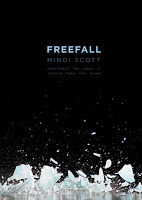
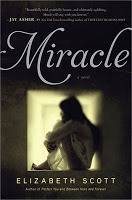
Freefall by Mindi Scott. You’d have a tough time finding a more authentic teen boy voice in Mindi Scott’s debut novel about a boy at a crossroads of his life following the death of his best friend.
Miracle by Elizabeth Scott. Elizabeth Scott’s 2012 novel has inexplicably received next to no attention and that’s quite maddening. This quiet little novel about a teen girl dubbed “Miracle Megan” after being the lone survivor of a plane crash.
If you’re secretly a romantic...
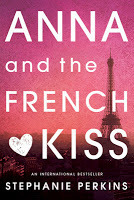
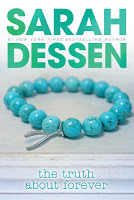
Anna & the French Kiss by Stephanie Perkins. Okay, okay... everyone has probably already read this one by now, but it’s one of the best examples of YA romance done really, really well. Perkins’ story isn’t just about finding love--it’s about finding oneself.
The Truth About Forever by Sarah Dessen. There’s a grand total of one kiss in Sarah Dessen’s perennially popular novel about a perfectionist teen girl and the artistic boy she spends her summer with while working at a ragtag catering company. Nevertheless, the build-up through the game of “Truth” the two play is absolutely charming.
If you want to get a taste of post-high school YA (what some folks may call “new adult")...
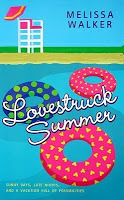
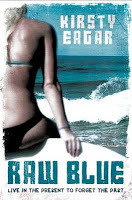
Lovestruck Summer by Melissa Walker. (Ignore the ridiculous chick lit-style cover on this one, trust us--it’s fantastic.) One summer in Austin changes everything for music-obsessed Quinn, whose narrow worldview blows up when her cousin and her cousin’s friends push her outside her comfort zone in a big way.
Raw Blue by Kirsty Eagar. Australian author Eagar’s novels can be tough to find outside of Australia, but her debut Raw Blue is worth the effort and then some. This is a moving story about a damaged young woman who takes a different, non-college, path following high school and how she finds a way forward following a traumatic event.







 Related StoriesSo You Want to Read YA?: Guest Post by E. C. Myers (author of Fair Coin and Quantum Coin)So You Want to Read YA?: Guest Post from Gwenda Bond (author of Blackwood)So You Want to Read YA?: Guest Post from Zoe Luderitz (School & Library Marketing, Social Media at Little, Brown)
Related StoriesSo You Want to Read YA?: Guest Post by E. C. Myers (author of Fair Coin and Quantum Coin)So You Want to Read YA?: Guest Post from Gwenda Bond (author of Blackwood)So You Want to Read YA?: Guest Post from Zoe Luderitz (School & Library Marketing, Social Media at Little, Brown)
Published on July 14, 2013 22:00
July 12, 2013
Links of Note: July 13, 2013
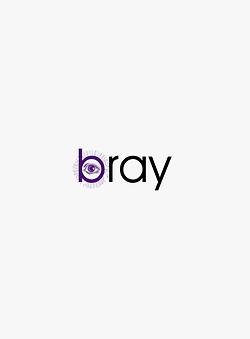
I am so digging the minimalist YA author art over at this Tumblr.
So I forgot to post links of note last week since I was still in ALA recovery mode. Since no one seemed to notice, I guess that being a little less regular isn't a big deal. That said, this roundup is lengthy and has a lot of good stuff, since I've had things piling up for many weeks now.
Have you checked out the recently-released PEW study on teen and younger adult reader habits with reading and libraries? Here are the salient points, with a link to the full study.
I've been asked a few times by people recently if they should be on Tumblr. As someone who is on Tumblr but not super active, my answer is always maybe, maybe not. I use it for personal stuff, as well as professional stuff. I think of it like a journal, as opposed to a more formal blog or tool. But there is a great article at Library Journal about Tumblr and libraries, as well as the tumblarians, well worth reading for anyone considering using Tumblr and wanting to know how to get started.
At Book Riot, Jill and Josh have an excellent discussion about whether or not kids are reading the wrongest things -- or whether we need to just quit worrying about it.
I haven't had time to completely catch up on this story, but I am sharing it because there is a LOT of food for thought here. A writer was caught plagiarizing a number of "new adult" authors and self-publishing those books under a number of different names. But wait! The plagiarist hired ghost writers to do the work. And there's so much more to unravel here, when it comes to plagiarism and self-publishing. Spend a little time unraveling this one.
As of July 1, Penguin Random House is officially a thing. But what does that mean exactly? Here's an interesting Op Ed from the NYT about what it could mean for the various imprints. Worth noting is that the author is published by one of those imprints he talks about, though I don't know how much it detracts from his bigger thoughts.
Starting this fall, there will be a national "Library Staff Picks" list through LibraryReads. This program looks super interesting -- kind of an IndieNext list for libraries. Edelweiss has a nice "how to" for getting involved through them on their website, too.
A nice infographic on where and how people around the world read.
So one of the things I've been thinking a lot about is how to be more creative and inventive when it comes to reader's advisory. It's my passion. One of those things I've tossed in my head is making reader's advisory guides to popular television shows. Guess what? Someone did this, and I absolutely love it -- here's what one librarian would recommend to each of the characters on Glee, if she were their librarian. Brilliant stuff!
If anyone is suddenly inspired to think about the reader's advisory stuff in new ways from that, I highly recommend checking out Scotty Rader's fan mixes for books he's digging. Here's one example for Some Girls Are -- but the possibilities here are huge! Check out how he's using the fanmix for all the media he's digging and how he's using Spotify/fanmixes at his library.
How have 90s book covers been remade to fit today's aesthetics? A fun cover post.
Keeping some cover talking going: Amy Spalding, who wrote The Reece Malcolm List, just did a cover reveal for her December release, Ink is Thicker Than Water. And while I don't tend to share cover reveals, I'm sharing this one because Amy's created her covers, and she shares the story of how this one went from concept to cover. The process is really neat and, I think, really unique.
Have you seen this amazing (and concerning) image of books published featuring diversity yet? Go check it out -- and then check out a few books that feature diversity and talk about them. Also, why isn't there more diversity being published? An interesting discussion over at The Horn Book.
What are the best selling books for 2013 so far? And is there a difference between best selling titles in print and in ebook? Publishers Weekly has the scoop.
Julie wrote a really great post that is worth sharing and revisiting from time to time: making a difference.
Curious about getting started with YA fiction but want some guidance? Sarah Andersen and Minnich have launched YA 101, an online course that you can take and strengthen your YA skills. These are super current titles, and both ladies teach high school -- they're working with the kids and know what's getting their interest. This should be really interesting.
The Millions shares the most highly anticipated 2013 adult novels (also known as, where the marketing money will be going this fall -- though I am really excited about a number of these!).
Ever wondered about Early Reader books? I know I have. I've bought them for libraries before without knowing very much about them. Agent Jenn Laughran has a great post with everything she knows about them. It's focused more on the writing aspect, but anyone who works with these books will benefit from the post.
I'm Your Neighbor is a really fantastic database that's being built for Kid Lit that talks about "new arrival" literature -- so books about immigration, about adoption, about new cultures merging with older ones. Keep an eye on this.
Plugged this last month but plugging again: the Disability in Kidlit project, running all July long, is amazing, invaluable, and so, so worth reading. I know it has opened my eyes.
Did you catch the Twitter game of "YA books with a letter missing?" Well, here's a roundup of covers someone made for book titles -- not just YA titles -- with one letter missing. Good for a laugh.
Goodreads finds out what it is that makes people put down a book, in infographic form.
With fewer retail options for buying books, looks like Amazon can start raising prices.
How about a little more book cover fun? Did you see these Edward Gorey covers of classic novels? I love the one for Kafka's Amerika.
Ten recent and forthcoming queer YA novels for you to check out.
I'm positive by now everyone's head that Laurie Halse Anderson's Speak was again challenged, this time on the grounds that it is "child porn." I am not linking to that story. Instead, I am going to link to Leila's impassioned post about this.
Saving the best for last maybe -- or at least the most amusing one. Design Sponge does a regular feature on their site called "Living in," and they match up a movie with products so you can "achieve the look." This week's was all about living in The Babysitter's Club and it's too fun not to share.
Over at Book Riot, I've had three posts in the last couple of weeks I'm going to link up here -- a roundup of literary-inspired Google Doodles, what I believe are the Five Things You Need to Know about YA, and your ultimate guide to summer YA reading. Now I am not remembering if I linked up to my post on YA-inspired manicures, so here's that one, too!







 Related StoriesLinks of Note: June 22, 2013Links of Note: June 8, 2013Links of Note, 5/18/13
Related StoriesLinks of Note: June 22, 2013Links of Note: June 8, 2013Links of Note, 5/18/13
Published on July 12, 2013 22:00
July 11, 2013
Five Essential Elements for Great Audiobook Narration
Narration can make or break an audiobook. No matter how excellent the writing, how exciting the story, how deep the characters, if it's narrated poorly, it makes for a bad listening experience. Below are my top five requirements for great audiobook narration. What other elements do you look for in a satisfying audiobook?
Title links lead to places you can hear excerpts.
1. Authentic Gender Voicing
I tend to favor female narrators, and that has a lot to do with how they voice male characters. For some reason, many male narrators feel like the best way to make their voices sound feminine is to be breathy. Really, really breathy. Like they've just run several yards and could use a drink of water. Or like they're slightly aroused, even. This technique almost always makes the woman sound weak, like she might faint at any moment. I'm listening to Inferno by Dan Brown, and narrator Paul Michael falls into this trap, hard. Female narrators don't falter as much when voicing characters of the opposite sex. Usually a slight change in pitch is enough. Even if the character doesn't sound completely male, at least he sounds human and in full control of his faculties.
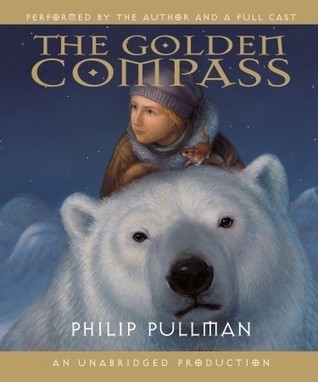
Example: Harry Potter and the Sorcerer's Stone by J. K. Rowling, narrated by Jim Dale
Jim Dale is one of the few male narrators who I think does justice to female voices. His female characters never sound weak unless they're written that way. I know people are divided with him, particularly on how he voices Hermione, but I love him. All of his characters in the Harry Potter series (and there are hundreds) sound distinct. His Luna is appropriately dreamy without becoming a caricature, and his McGonagall is fierce and a little old and quite stern and just overall wonderful.
2. Voice Variation
I don't need a fully-voiced audiobook, but I think some differentiation among character voices is essential, even if it's just a slight change in pitch or tone.
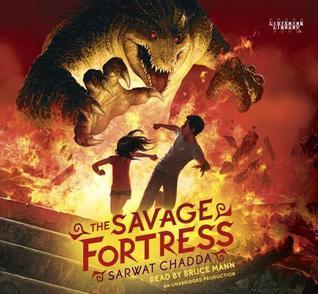 Example:
The Savage Fortress
by Sarwat Chadda, narrated by Bruce Mann
Example:
The Savage Fortress
by Sarwat Chadda, narrated by Bruce Mann
Mann wisely chooses not to completely transform his voice for the characters in Chadda's story. When he voices characters, it's clear it's still his own voice, but there's just enough differentiation between his normal narrating voice and the character to distinguish the character, to make her or him memorable and easily recognizable. I thought his voicing of the rakshasa Parvati was especially good - her voice has just a bit of a hiss to it, and he slows down his speech just a tad for her. My review
3. Authentic Accents
This one is pretty self-explanatory. A bad accent can completely ruin a book, particularly if it's used frequently. A good accent will pull you even further into the story, adding dimension to both character and setting. Accurate national as well as regional accents are important. People's ability to judge accuracy varies, but what's important is that it sounds right to the listener. (Although inaccurate stereotypes, even if they "sound fine" to the listener, should be avoided!)
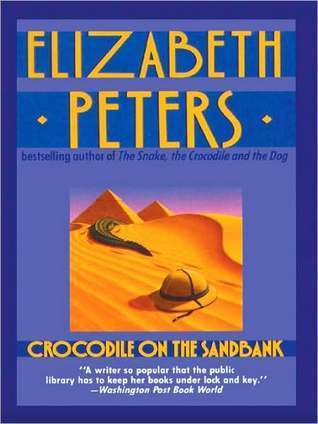
Example: Crocodile on the Sandbank by Elizabeth Peters, narrated by Barbara Rosenblat
Rosenblat juggles English, Arabic, and American accents in this series about female Egyptologist Amelia Peabody. Amelia is an Englishwoman who tells the story in first person, so it's mostly done in an English accent. Rosenblat does it so well that I did not know for years that she herself is an American, with a natural American accent.
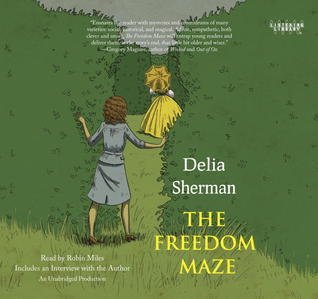 Honorable Mention:
The Freedom Maze
by Delia Sherman, narrated by Robin Miles
Honorable Mention:
The Freedom Maze
by Delia Sherman, narrated by Robin Miles
There's an interview at the end of the audiobook where Sherman mentions that she knew Miles was the right narrator for the job since she pronounced "Grandmama" the proper Southern way. Miles voices the entirely Southern cast (some black, some white) without stooping to stereotypical or exaggerated depictions. My review
4. Smooth Editing
All the pieces of the narration should fall together smoothly. There shouldn't be any irregular gaps in time between sentences or chapters. It should seem like the narrator recorded the whole story in one go, without pausing to eat a sandwich or visit the restroom or pick up the kids from school. There shouldn't be any static or strange background noise. An audiobook with poor editing will sometimes have sections that are louder than others (probably the issue I notice most frequently).

Example: The Golden Compass by Philip Pullman, narrated by the author and a full cast
It's much easier to come up with a non-example in this category, since good editing should be something you don't even notice. It's when the editing is bad that it stands out. That said, anything that incorporates as many different narrators as a Full Cast Audio production does and does it without a hitch deserves to be recognized. The Golden Compass is one of their best.
5. Narrator Enjoyment
This is more difficult to pin down. Narrator enjoyment of the story leads to natural, unforced changes in tone, pace,
pitch, volume, and so on. It makes the listening experience interesting
and fulfilling. It's obvious when a narrator isn't enjoying the story he's telling. There's no emotion behind his words, no oomph to the action scenes, no swoon during the kissing scenes, no cracked voices during the sad parts. I want a narrator who is so caught up in the story that she makes me caught up too. I want a narrator who makes me feel all the feelings, who can take a possibly mediocre story and turn it into something that makes you sob in the parking lot as you finish the last disc before heading in to do the shopping.
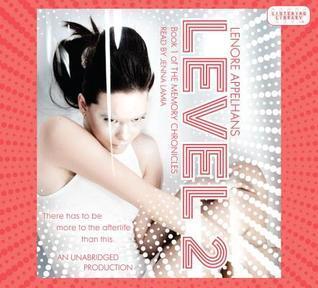 Example:
Level 2
by Lenore Appelhans, narrated by Jenna Lamia
Example:
Level 2
by Lenore Appelhans, narrated by Jenna Lamia
Lamia is known in the audiobook world for having a spot-on teenage girl voice. I was very impressed with her rendition of Level 2, a book that relies heavily on flashbacks. I don't generally enjoy flashbacks (actually I actively try to avoid them), but Lamia's narration, fraught with love and yearning and regret and all of those other delicious emotions, made me care intensely about them. I fully believed she was the voice of Felicia, and I fully believed she was just as hooked on the story as I was.







 Related StoriesThe Savage Fortress by Sarwat ChaddaAudiosynced: March EditionAudio Review: The Silence of Murder by Dandi Daley Mackall
Related StoriesThe Savage Fortress by Sarwat ChaddaAudiosynced: March EditionAudio Review: The Silence of Murder by Dandi Daley Mackall
Title links lead to places you can hear excerpts.
1. Authentic Gender Voicing
I tend to favor female narrators, and that has a lot to do with how they voice male characters. For some reason, many male narrators feel like the best way to make their voices sound feminine is to be breathy. Really, really breathy. Like they've just run several yards and could use a drink of water. Or like they're slightly aroused, even. This technique almost always makes the woman sound weak, like she might faint at any moment. I'm listening to Inferno by Dan Brown, and narrator Paul Michael falls into this trap, hard. Female narrators don't falter as much when voicing characters of the opposite sex. Usually a slight change in pitch is enough. Even if the character doesn't sound completely male, at least he sounds human and in full control of his faculties.

Example: Harry Potter and the Sorcerer's Stone by J. K. Rowling, narrated by Jim Dale
Jim Dale is one of the few male narrators who I think does justice to female voices. His female characters never sound weak unless they're written that way. I know people are divided with him, particularly on how he voices Hermione, but I love him. All of his characters in the Harry Potter series (and there are hundreds) sound distinct. His Luna is appropriately dreamy without becoming a caricature, and his McGonagall is fierce and a little old and quite stern and just overall wonderful.
2. Voice Variation
I don't need a fully-voiced audiobook, but I think some differentiation among character voices is essential, even if it's just a slight change in pitch or tone.
 Example:
The Savage Fortress
by Sarwat Chadda, narrated by Bruce Mann
Example:
The Savage Fortress
by Sarwat Chadda, narrated by Bruce MannMann wisely chooses not to completely transform his voice for the characters in Chadda's story. When he voices characters, it's clear it's still his own voice, but there's just enough differentiation between his normal narrating voice and the character to distinguish the character, to make her or him memorable and easily recognizable. I thought his voicing of the rakshasa Parvati was especially good - her voice has just a bit of a hiss to it, and he slows down his speech just a tad for her. My review
3. Authentic Accents
This one is pretty self-explanatory. A bad accent can completely ruin a book, particularly if it's used frequently. A good accent will pull you even further into the story, adding dimension to both character and setting. Accurate national as well as regional accents are important. People's ability to judge accuracy varies, but what's important is that it sounds right to the listener. (Although inaccurate stereotypes, even if they "sound fine" to the listener, should be avoided!)

Example: Crocodile on the Sandbank by Elizabeth Peters, narrated by Barbara Rosenblat
Rosenblat juggles English, Arabic, and American accents in this series about female Egyptologist Amelia Peabody. Amelia is an Englishwoman who tells the story in first person, so it's mostly done in an English accent. Rosenblat does it so well that I did not know for years that she herself is an American, with a natural American accent.
 Honorable Mention:
The Freedom Maze
by Delia Sherman, narrated by Robin Miles
Honorable Mention:
The Freedom Maze
by Delia Sherman, narrated by Robin MilesThere's an interview at the end of the audiobook where Sherman mentions that she knew Miles was the right narrator for the job since she pronounced "Grandmama" the proper Southern way. Miles voices the entirely Southern cast (some black, some white) without stooping to stereotypical or exaggerated depictions. My review
4. Smooth Editing
All the pieces of the narration should fall together smoothly. There shouldn't be any irregular gaps in time between sentences or chapters. It should seem like the narrator recorded the whole story in one go, without pausing to eat a sandwich or visit the restroom or pick up the kids from school. There shouldn't be any static or strange background noise. An audiobook with poor editing will sometimes have sections that are louder than others (probably the issue I notice most frequently).

Example: The Golden Compass by Philip Pullman, narrated by the author and a full cast
It's much easier to come up with a non-example in this category, since good editing should be something you don't even notice. It's when the editing is bad that it stands out. That said, anything that incorporates as many different narrators as a Full Cast Audio production does and does it without a hitch deserves to be recognized. The Golden Compass is one of their best.
5. Narrator Enjoyment
This is more difficult to pin down. Narrator enjoyment of the story leads to natural, unforced changes in tone, pace,
pitch, volume, and so on. It makes the listening experience interesting
and fulfilling. It's obvious when a narrator isn't enjoying the story he's telling. There's no emotion behind his words, no oomph to the action scenes, no swoon during the kissing scenes, no cracked voices during the sad parts. I want a narrator who is so caught up in the story that she makes me caught up too. I want a narrator who makes me feel all the feelings, who can take a possibly mediocre story and turn it into something that makes you sob in the parking lot as you finish the last disc before heading in to do the shopping.
 Example:
Level 2
by Lenore Appelhans, narrated by Jenna Lamia
Example:
Level 2
by Lenore Appelhans, narrated by Jenna LamiaLamia is known in the audiobook world for having a spot-on teenage girl voice. I was very impressed with her rendition of Level 2, a book that relies heavily on flashbacks. I don't generally enjoy flashbacks (actually I actively try to avoid them), but Lamia's narration, fraught with love and yearning and regret and all of those other delicious emotions, made me care intensely about them. I fully believed she was the voice of Felicia, and I fully believed she was just as hooked on the story as I was.







 Related StoriesThe Savage Fortress by Sarwat ChaddaAudiosynced: March EditionAudio Review: The Silence of Murder by Dandi Daley Mackall
Related StoriesThe Savage Fortress by Sarwat ChaddaAudiosynced: March EditionAudio Review: The Silence of Murder by Dandi Daley Mackall
Published on July 11, 2013 22:00
July 10, 2013
Over You by Amy Reed
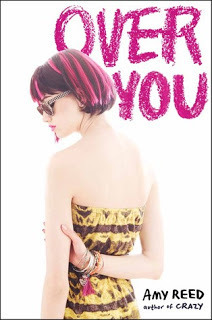
Amy Reed's latest novel Over You comes with everything readers who have been fans of Reed have come to expect: compelling characters, a strong back story to all of those characters, fluid and strong writing, and a story line that keeps you going through to the end, never wanting to set the book down. What Over You adds that takes this book from being a really good one to an outstanding one is how it goes from being a story about a friendship -- an unhealthy one -- to being a story about independence and, at heart, about feminism.
Sadie's been kicked out of her house by her father for drinking too much, and she's being sent to live with her mother Lark on her farm in rural Nebraska. Sadie, unable to do anything alone or for herself, begs her friend Max to join her on the trip. She agrees, and the story begins as both wait at a bus stop to be picked up by Sadie's mother's boyfriend/stepfather/romantic partner.
Max is the one telling the story. Max lives for Sadie and would follow her anywhere. They're best friends; they love each other; they're connected at the hip. There have been times when Sadie's been Max's romantic interest, too, where the lines between best friend and romantic interest and the feelings therein have blurred a bit, and Sadie's allowed Max to indulge in those feelings.
Allowed.
But once the two girls get to the farm and find they're going to be housed together in a small trailer on a farm where sustainability and intentional living are the keys to success and happiness, Sadie contracts an illness that forces her to quarantine. Max can't handle it -- she can't be away from Sadie, can't be away from the girl who helped her find her way in the world. It's especially distressing at the farm, since this is the place where Max didn't necessarily want to fit in. She didn't want to be separated from Sadie because Sadie is her best friend and the person who helps direct the course of her life.
Of course, that forced separation is what Max needs to realize that Sadie is no friend.
Sadie is the kind of girl who needs to have power in a situation. Who needs to be doted upon. And Max realizes this when Sadie's illness means that Max is good for nothing BUT giving into Sadie's demands and wishes. Sadie doesn't love her; Sadie uses her.
There's another element to this story, and that comes in the form of Dylan. He's the boy Sadie had her eyes on when they first got to the farm, and he's the boy who Max finds herself spending a lot of time with now, as Sadie's taken sick. Slowly, Max finds herself falling for Dylan. He's mysterious and dark and aloof -- all of the things that Max found so compelling about Sadie.
He's her replacement, which means...he's not going to be good for Max either. Though I saw it coming from miles away, he goes as far as Sadie does in abusing Max's good nature and good will -- but his advances are physical, and they are taunting in a very sexual and horrific manner.
So what's the point when Max says enough is enough?
Well. That's the farm. The point of the farm. It's the state of Nebraska. It's Max remembering her own passion for mythology. It's the entire idea of the phoenix, destroying herself and then rebuilding herself from the ashes.
Reed's method of doing this is smart. It's almost exceedingly simple and yet, it's perfect. There are chapters interspersing the narrative which are tales of the different Greek myths and the writing in them is downright spectacular. It's literary and engrossing and so perfectly captures Max's struggle and her passion all at once.
One of the strongest elements of this story is that Max is bisexual. But this is never, ever the defining feature of her story. And where it would be so easy for the narrative to shift toward that, especially as Sadie herself blurts this out at a barn party in the middle of no where Nebraska (where you as a midwesterner bristle, worried about the reaction), you remember that teenagers are teenagers and that means sometimes their reactions to such heavy news about a person is no reaction at all because it is truly not a big deal. But of course, this is what Dylan uses against Max in a disturbing, painful scene near the end of the book. It is, though, Max's decision to take ownership of her body, her decisions, her relationships, and her lifestyle back from any and everyone else. When she does that, even Dylan's sickening abuse of her sexuality against her is not a big deal. It's handled with such care.
Max is one of my favorite YA characters in a long time. I loved experiencing the world through her eyes, and there were many times I completely related to a lot of her struggle about identity and what it means to be a good person, what it means to love and express that, and what it means to be a good friend. It's not about narrating someone's story for them; it's about narrating your own. She also has a strong back story, which is one we don't get to know at all until we finally get to see the world through her eyes. It takes her a long time to open it up, and when she does, things only snap further into place.
Reed is a gem in contemporary ya. This is the kind of book I can see teens I work with loving, especially as it's set in the midwest, as it's infused with life on a farm/in a small town, and yet it doesn't fall into the easy trappings or stereotypes of those sorts of teen lives at all. Readers who have read Reed before will be eager for this book, and those who love stories about friendship -- and those looking for a nice feminist novel -- will do well with Over You. Hand this over, too, to fans of Kirsten Hubbard's Like Mandarin.
Over You is available now. Review copy picked up at ALA Midwinter.







 Related StoriesVortex by S. J. KincaidThousand Words by Jennifer BrownGorgeous by Paul Rudnick
Related StoriesVortex by S. J. KincaidThousand Words by Jennifer BrownGorgeous by Paul Rudnick
Published on July 10, 2013 22:00
July 9, 2013
Story for All Ages
At my church, we have a segment of the service called "Story for All Ages." The idea is to tell a short story that will appeal to everyone in the congregation, from little kids who are just learning how to listen to grown-ups who may have not had a story read to them since they were toddlers. The story can be one the reader simply pulls from her own mind, but more often, our members pick a book and read from it. As a librarian, it should not surprise you that I get requests to read the Story for All Ages pretty frequently. (Since I purchase all the children's books for my library, I have a good knowledge of what's out there, too!)
I like to choose books that most of the audience may not have read before. Most other readers tend to choose titles that are very serious and message-heavy, that relate directly to the topic of the sermon or talk. There's nothing necessarily wrong with that, but I like to mix it up a little. The books I choose are usually funny ones, and the adults are often the ones who laugh the hardest. I look for stories that aren't too long, that have bright, large illustrations and an easy to follow narrative with relatively few words per page.
Below are a few of my favorites.
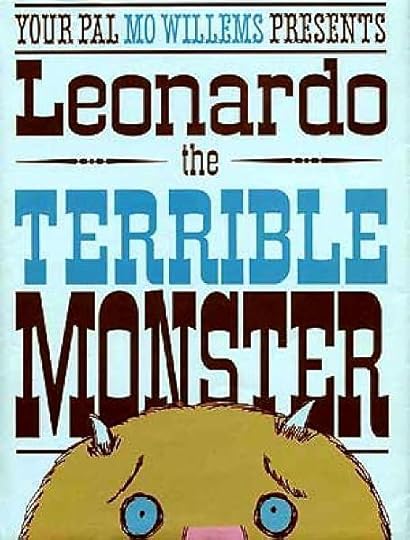
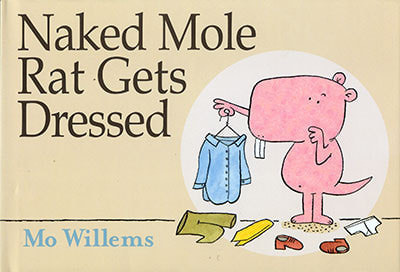
Leonardo the Terrible Monster by Mo Willems
This was the first Story for All Ages I ever read and it's still my favorite. The pages, font, and illustrations are all large, and it's a fantastic readaloud. The story itself - about a monster who is so terrible at being a monster he can't even scare the most scaredy-cat little boy of all - is hilarious, ready-made for funny voices. You'll get mad respect from the audience if you can read the full-page rant consisting of a long run-on sentence without pausing to take a breath.
Naked Mole Rat Gets Dressed by Mo Willems
This is another fun and funny little story from Willems, who is my go-to author for crowd-pleasing picture books. Wilbur flouts convention in his town by wearing clothes! The other naked mole rats are shocked. What will Grandpah Mole Rat, the nakedest mole rat of all, think of him? Animals in clothes are precious, particularly as drawn by Willems. There's a gently-conveyed message to be yourself (normal in picture books), but I'd love it without the message, too.
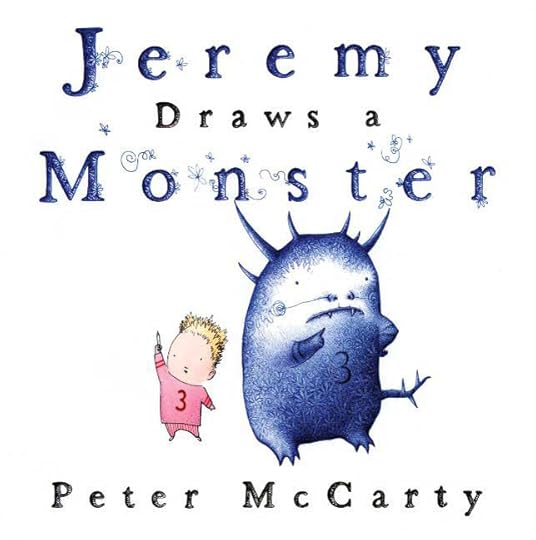
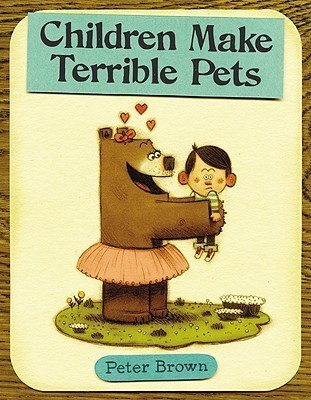
Jeremy Draws a Monster by Peter McCarty
McCarty's book is a great one to share with a group because of the illustrations, which are more integral to the story than most picture books (plus they're a bit unusual, lending extra interest). When Jeremy draws a monster, it starts to take over his life. It demands that Jeremy draw all sorts of things for it: a sandwich, a checkerboard, a chair, a hat, and so on. It drives Jeremy up the wall, until he finds a clever way to solve the problem. The humor is more understated here than in the Willems' titles. I like the emphasis on creative problem-solving, but more than that, I love the idea that what you create on the page can come to life.
Children Make Terrible Pets by Peter Brown
The title alone gets an immediate chuckle from the adults in the audience. The adults also dig the somewhat retro feel of the illustrations, I think, and the story - about a bear who finds a stray human boy and wants to make it her pet - is one with wide appeal to all ages. The kids dig the absurdity of a bear having a human pet and the adults dig the parallels of the bear's troubles with the kids of their acquaintance who have at some point or other asked "Can I keep it?"
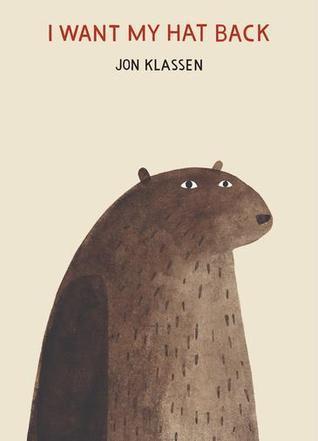
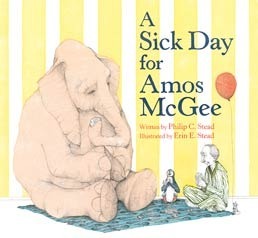
I Want My Hat Back by Jon Klassen
This is a book that can be enjoyed on two levels: by the very young who may not get the final joke and therefore won't be disturbed by it, and by the older children and adults who will get the final joke, but are old enough to find it funny instead of upsetting. Klassen's no slouch when it comes to illustrating, either, as his Caldecott honor (for Extra Yarn) and win (for this book's companion) show.
A Sick Day for Amos McGee by Philip C. Stead, illustrated by Erin E. Stead
Caldecott winners and honorees are a good place to look for stories to be shared with a diverse audience (with diverse tastes), and I loved Erin E. Stead's illustrations the moment I laid eyes on them. They're beautiful and detailed and beg for further examination. The story is lovely, too, with a nice focus on fellowship and how we show our friendship and love through our actions, always good for a church audience.
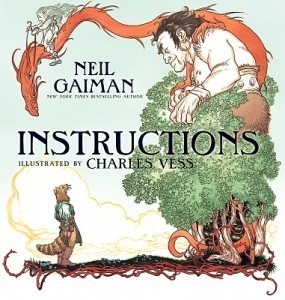
Instructions by Neil Gaiman, illustrated by Charles Vess
I have a serious weakness for Charles Vess' illustrations. They're gorgeous and colorful and always remind me of my ideal fantasy world. While I'm not Gaiman's biggest fan, he has a tremendous way with words that works so well in this short poem. It reads just like a story and incorporates common fairy tale tropes in a creative way, managing to also surprise and amuse the reader at turns. I love how it invites the reader into the world, quite literally, and fires the imagination. My boyfriend was actually the one to read this to the congregation, and it was a huge hit.







I like to choose books that most of the audience may not have read before. Most other readers tend to choose titles that are very serious and message-heavy, that relate directly to the topic of the sermon or talk. There's nothing necessarily wrong with that, but I like to mix it up a little. The books I choose are usually funny ones, and the adults are often the ones who laugh the hardest. I look for stories that aren't too long, that have bright, large illustrations and an easy to follow narrative with relatively few words per page.
Below are a few of my favorites.


Leonardo the Terrible Monster by Mo Willems
This was the first Story for All Ages I ever read and it's still my favorite. The pages, font, and illustrations are all large, and it's a fantastic readaloud. The story itself - about a monster who is so terrible at being a monster he can't even scare the most scaredy-cat little boy of all - is hilarious, ready-made for funny voices. You'll get mad respect from the audience if you can read the full-page rant consisting of a long run-on sentence without pausing to take a breath.
Naked Mole Rat Gets Dressed by Mo Willems
This is another fun and funny little story from Willems, who is my go-to author for crowd-pleasing picture books. Wilbur flouts convention in his town by wearing clothes! The other naked mole rats are shocked. What will Grandpah Mole Rat, the nakedest mole rat of all, think of him? Animals in clothes are precious, particularly as drawn by Willems. There's a gently-conveyed message to be yourself (normal in picture books), but I'd love it without the message, too.


Jeremy Draws a Monster by Peter McCarty
McCarty's book is a great one to share with a group because of the illustrations, which are more integral to the story than most picture books (plus they're a bit unusual, lending extra interest). When Jeremy draws a monster, it starts to take over his life. It demands that Jeremy draw all sorts of things for it: a sandwich, a checkerboard, a chair, a hat, and so on. It drives Jeremy up the wall, until he finds a clever way to solve the problem. The humor is more understated here than in the Willems' titles. I like the emphasis on creative problem-solving, but more than that, I love the idea that what you create on the page can come to life.
Children Make Terrible Pets by Peter Brown
The title alone gets an immediate chuckle from the adults in the audience. The adults also dig the somewhat retro feel of the illustrations, I think, and the story - about a bear who finds a stray human boy and wants to make it her pet - is one with wide appeal to all ages. The kids dig the absurdity of a bear having a human pet and the adults dig the parallels of the bear's troubles with the kids of their acquaintance who have at some point or other asked "Can I keep it?"


I Want My Hat Back by Jon Klassen
This is a book that can be enjoyed on two levels: by the very young who may not get the final joke and therefore won't be disturbed by it, and by the older children and adults who will get the final joke, but are old enough to find it funny instead of upsetting. Klassen's no slouch when it comes to illustrating, either, as his Caldecott honor (for Extra Yarn) and win (for this book's companion) show.
A Sick Day for Amos McGee by Philip C. Stead, illustrated by Erin E. Stead
Caldecott winners and honorees are a good place to look for stories to be shared with a diverse audience (with diverse tastes), and I loved Erin E. Stead's illustrations the moment I laid eyes on them. They're beautiful and detailed and beg for further examination. The story is lovely, too, with a nice focus on fellowship and how we show our friendship and love through our actions, always good for a church audience.

Instructions by Neil Gaiman, illustrated by Charles Vess
I have a serious weakness for Charles Vess' illustrations. They're gorgeous and colorful and always remind me of my ideal fantasy world. While I'm not Gaiman's biggest fan, he has a tremendous way with words that works so well in this short poem. It reads just like a story and incorporates common fairy tale tropes in a creative way, managing to also surprise and amuse the reader at turns. I love how it invites the reader into the world, quite literally, and fires the imagination. My boyfriend was actually the one to read this to the congregation, and it was a huge hit.








Published on July 09, 2013 22:00
July 8, 2013
ALA 2013 Chicago: A Recap
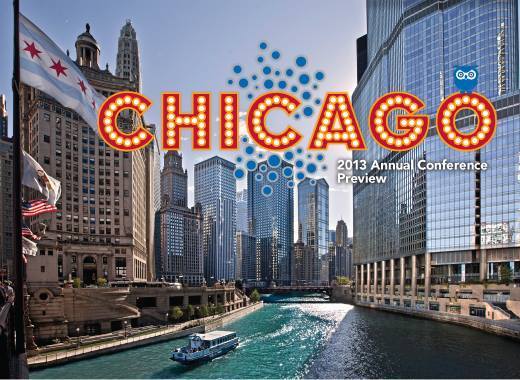
image via libraryasincubatorproject.org
It took almost a week to recover from the ALA conference this year. I think a lot of it had to do with the amount of movement that happened there -- from place to place, from person to person -- and a lot had to do with feeling like a few big projects that I've been working on for a long time wrapped up. I've been crashing and crashing hard the last few days, but I've found taking it easy has also been really good.
ALA this year was good. It was great to meet up with people I've been talking with for a long time, to meet new people, and to learn from and with my colleagues.
Chicago is hometown to me -- I grew up near Joliet and spent a good chunk of time in the city as a kid (I took a summer class at Columbia one year, and I lived near the Newberry Library for a class in undergrad). So there's not much in the way of touristy things to share.
Thursday
Since I still live relatively close to Chicago, I hopped on the train in the late morning and met up with Liz at our hotel a little after noon. We decided to grab lunch in the hotel (which was good) and then we relaxed before Sophie showed up.
The three of us went out for Thai dinner, brainstorming and discussing how we'd present on Monday together (because we'd decided earlier on that our presentation on "new adult" would have to be as up to date as possible). In the midst, Liz came up with a brilliant blog idea that we hope to launch later this year.
Friday
Because it was the big Blackhawks rally, some of my plans for the morning were shifted around. I had a lovely brunch early with Liz, Sophie, and our friend Victoria. After the meal, we ended up back in our room, and when Liz and I saw the cleaning lady coming, we thought we'd scoot down to the lobby and get out of her hair.
But. . .

courtesy of Liz
The rally for the team apparently was happening in our hotel after the parade. Which would have been nice for the hotel to tell us, since we had very few places to go and get work done outside our room (and getting out of our hotel was a no-go). If you squint, you can see the Stanley Cup there in the image since it was brought to our hotel lobby.
We did end up finding a place to sit and collect ourselves, then we went back to our room, got our stuff organized, then headed down to the convention center for opening night of the exhibits floor.
All in all, I thought it wasn't too bad. It was crowded, and I was quickly reminded at exhibits how much I dislike crowds and tight spaces, but I thought that on the whole, behavior was totally fine and civil. I wish people were better about stepping out of the middle of an aisle when they are gawking, but that's a minor complaint. The first night of exhibits I picked up a few books and ARCs I was hoping to find. I got to meet Erica Lorraine Scheidt and get a finished copy of Uses for Boys, and I picked up ARCs of Elizabeth Scott's Heartbeat and Marisha Pessl's Night Film. I also picked up a signed movie-cover edition of Judy Blume's Tiger Eyes.

After about half an hour, I grabbed a shuttle and headed back to my hotel to change for the big kid lit drink night party. I think this was the 5th or 6th one of these I've put together, and every single time I am blown away by the turn out.
We had no room this time. None. It was packed, standing room only, and it was AMAZING. I met so many people I'd been hoping to meet, librarians, bloggers, and authors alike. It was so nice to put faces to people like Jessica and Rachel who I've been talking to or reading for years (!!!) now. I also got to spend some time with Stephanie Kuehn (author of Charm & Strange), and I met Alison Cherry (author of the forthcoming Red), Christa Desir (author of the forthcoming Fault Line), and many, many other people.
Imagine some photos of a really crowded bar right here because the photos I took are so dark they're not worth posting. I'd say we easily had 60 or so people at the event, which is an incredible turnout. A big thanks to Julie and Stephanie for helping organize another successful meetup.
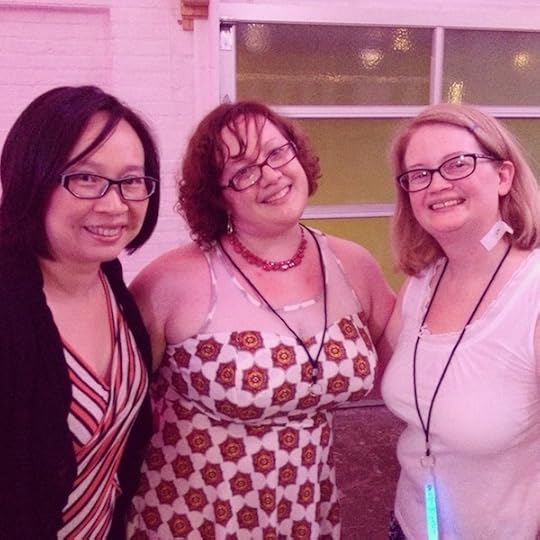
photo courtesy of Malinda Lo
I ended up skipping out early from my own event to make it across town to the Little, Brown dance party celebrating Holly Black's Coldest Girl in Cold Town, and I brought Stephanie Kuehn with me to the event. I knew there'd be a few librarians who'd love to meet her there, and I thought she'd enjoy it since it was her first time at ALA (and the dance party is one of my favorite ALA things). Not only is it a fun event, it's one of the few where I got to see and spend time with nearly all of my favorite librarian friends -- when we see each other at the convention itself, it's so often in passing, so getting to spend time together dancing is enjoyable.
We shut the place down, and it was really nice to not only see people I knew, but I got the chance here to meet some new faces, too. It was the perfect kick off to the conference, even if it meant getting into the hotel really late the night before presentation number one at ALA (so worth it, as it always is).
Saturday
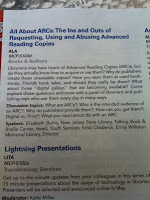
Don't know why my name is missing.
I managed to sneak in a few minutes of wandering the exhibit floor before my panel on advanced reader copies on Saturday morning. I'd packed an entire backpack for the day -- including my laptop, about twelve notebooks, and so forth -- since immediately after my panel I had to head to a couple of committee meetings. I was so ready.
What made the morning exciting was that one of my good friends -- who I went to college with, the maid of honor in my wedding -- surprised me by showing up to ALA and finding me prior to my presentation. She's a librarian in the Chicago suburbs, but we'd never talked about whether she was going or not.
It was one of those surprises that put a smile on my face.
The panel was comprised of myself, Kristi Chadwick, Liz Burns, and then we invited Jen Childs (Director of Library Marketing at Random House for adult books) and Victoria Stapleton (Director of School and Library Marketing at Little, Brown) to talk from their side of the table on the topic.
As you may have seen, I made a series of beautiful charts from our ARC survey for the panel. I popped them into a Prezi (also linked above) and was so ready to share data.
Except, we had no internet in our room. None. Zilch. No matter how many times I tried to reconnect things in the room, no internet would come through. The tech support at McCormick was not helpful. All of the information I'd received prior to ALA said I'd have internet, but there was not, in fact, internet connected to the computer with our presentation. I was asked -- again by their staff -- to pop my presentation onto a flash drive and work off there, but it was unclear to them that doing so was impossible without access to the internet.
Something to know about me: frustration is one of those things that makes me cry. I joke about being robot hearted but actually, I am very sensitive. I cry with frustration and anger and it's how I feel better. Except, I couldn't do it here since we're on stage, about to present. So I held it in, decided to forgo showing the stuff I'd worked on for the presentation, and tried to compartmentalize it.
The presentation itself went well, but I was very bummed more people didn't attend. The information I learned from my co-panelists was great -- a lot, specifically, about the decline of print ARCs, about how to have a successful request through Netgalley or Edelweiss (and why Edelweiss will be the go-to place for eARCs in the future), and so forth. We talked about what you can and cannot do with ARCs beyond what emerged in the survey, too.
I felt good about it. But I felt sad, too, fewer people attended than hoped.
As soon as the presentation ended, I was still frustrated about internet issues, and it become compounded when I left my room at 11:35 for a shuttle to make it to my noon meeting. I didn't even get on a shuttle until noon, though. And I didn't get to my meeting until 12:20. There is nothing I dislike more than lateness, and worse, I hate being late myself worst of all. My frustration only amplified, and at that point, I was about ready to explode (again, anger and frustration are my triggers, and I know this -- but I held it together).
The meeting was only an hour long, so missing twenty minutes felt like missing out on a lot. Not to mention that the room we had the meeting in had no wireless internet . . . and all of my committee notes were, of course, on Google Docs (it seems ridiculous that you're expected to be prepared for committee meetings but then you're in a room where you can't access your documents -- this is 2013, not 1993). But afterwards, my chair and I went to lunch together, and I felt a little better, though I was exhausted (holding it together and not crying when you want to is hard). When my chair went to another meeting, I ended up waiting in the hotel for an hour until my next meeting, since clearly trying to do anything with shuttles running on such a crummy schedule felt too chancey. It ended up being okay, and my second subcommittee meeting was excellent. We made huge progress on talking about our charge and what books we think should or shouldn't be on the list, as well as what our "dream" list would look like.
The meeting wrapped up at 5, and I ended up taking a cab back to my hotel (shuttles...) to get dressed up for a dinner with Katherine Tegen. Fortunately, it was walkable.
Dinner was delicious and I had the chance to meet not only the folks behind the imprint, but I got to meet a number of authors, too. I had dinner with Debra Driza (author of Mila 2.0) at my table, then I was introduced to Hilary T. Smith (author of Wild Awake), and at the end of the event, I managed to say hello to Veronica Roth (who knew who I was which was wild). The event was really nice, and I was grateful to be invited since it was a really small group. I just wish I'd been a tiny bit less exhausted.
Sunday
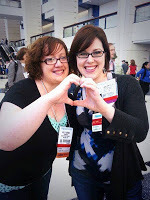
With my friend Anna
Waking up Sunday was funny. There was a flood of tweets that kind of looked like what I was thinking inside my head: sleeping in was nice. I felt a million times better than I had on Saturday, after a full night's sleep and a big dinner the night before.
I took the day very easy. I made my way to the convention center and wandered exhibits a bit, picked up a handful of things (that were talked up to me personally -- the difference of the floor on Sunday from Friday night is huge). These included The Waking Dark by Robin Wasserman, Chasing Shadows by Swati Avasthi, and The Living by Matt de la Pena.
But the biggest excitement for me on Sunday was that I happened to walk by the Sourcebooks booth right when Geoff Herbach was signing.
Serendipity.
Herbach's the author of Stupid Fast and I love that series. More though, it was one of the books I'd been a part of the Cybils panel for when it was shortlisted, and Herbach was the last of the authors I'd hoped to meet because I'd been a part of the Cybils panel who'd read and voted for the book. It was so nice to meet him finally, and I think my signed copy of I'm with Stupid will be long-treasured.
I did lunch with a big group of people I was thrilled to have lunch with at the convention center, including Jackie (who I was thrilled to even see), Gwenda Bond, Liz, Sara Ryan, and Jennifer Laughran. It was a totally laid back affair at the food court, followed by a trip to the only adjoining hotel for coffee and gossip.
After lunch, I decided to head back to my hotel room and just chill. A few long-time friends ended up getting in touch later and we decided to grab dinner together in my hotel and catch up.
It may have been my favorite meal.
I've been spending time with these same ladies for years, not only at conferences, but we all share a listserv together where we celebrate and vent and brainstorm. It's always great when we can get together in person and talk. Plus, I got to end the meal eating this:

That is a carrot cake whoopie pie. It was delicious.
Monday
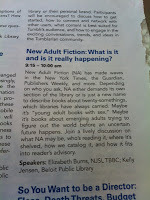
The biggest day at the conference for me was Monday, and it started out with a bang. Sophie, Liz, and I were presenting on "new adult" at 9:15 in the morning. But we'd all managed to get up and get ready earlier than we'd thought, so we were all in the convention center early. I used the time to snag a spot along the wall for the presentation prior to ours on the Tumblarian crew.
I've been on Tumblr for a while but it hasn't been until I spent time with the tumblarian tag and getting to know those who are involved with it that I found a way to use Tumblr effectively (and still personally). The presentation wasn't necessarily ground breaking for me, but it did get me thinking about the ways I could implement Tumblr at work, which is something I've been hoping to do for a while.
Nugget of wisdom I took away: Tumblr tags are only searchable through the first five you use. So if you tag a post with 15 or so things, only the first five are able to be searched and tracked. Put your most important ones first if you want people to find your content.
Then it was go time.
Like with our ARC panel, amazing musician librarian Julie Jurgens kicked it off with a theme song (she wrote and performed them at so many panels). We managed to get someone to snag a video of this one:
I'd been feeling really good about this presentation, and I think it went very well. We were able to talk about things relating to new adult from our perspective as they stand now and as we think they'll progress as the "genre" emerges and grows. We were asked incredibly intelligent, thoughtful questions from the audience, and everything just felt very good in the discussion. We knew our stuff, but we made it very clear we were no experts. That we had more questions than we had answers.
I knew the room was packed, but two people passed along these images showing just how packed the room was. I'm seriously blown away.
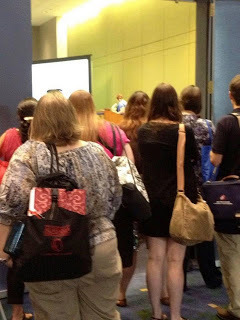
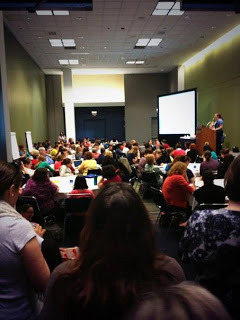
If you're curious about the take aways from our panel, you can check out the hash tag #ALA13NA on Twitter. It was really enlightening to go back and look at that later, since I feel like I took away as much from this panel as I was able to impart (my biggest commentary on this was that we should be paying attention to these titles -- and others -- and really put them into context with crossover appeal as a reader's advisory skill/tool/area of improvement).
You can find all of our resources over at the Readadv blog. We plan on keeping that a living document, so you will see more stuff pop up there as we find more books that might fit this niche.
After our presentation ended and we answered questions, I had 15 solid minutes for myself before a lunch date with a friend. I took that time to run to the reading stage in the exhibit hall and listen to Sara Zarr share a bit from Roomies. Since I had to decline a lunch invite with her and a few other authors, it was my one chance to finally see her (or so I thought!). It got me really interested in the book, and I ended up reading it in one sitting when I got home from ALA. It was supremely satisfying.
I went to lunch with a friend shortly thereafter, which was lovely. It wasn't as long as I'd have enjoyed because I had to run to another committee meeting. This committee meeting was, fortunately, in the hotel where we'd eaten lunch, so I was able to make it not only on time, but with enough time to get settled and organized.
Those things make a huge difference.
I walked away from that meeting feeling really positive about the committee experience and I'm really eager to keep up the enthusiasm. I love the charge, and I remind you again that you can help out with recommending titles for consideration.
When that committee meeting ended, I was invited for drinks but I decided I'd be better prepared for the evening with a little rest in my room. Plus, I had to prepare myself for dinner:
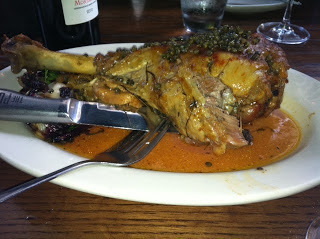
I went out with Liz, Barry Goldblatt, and Karyn Silverman to a place called The Purple Pig and we ate. I'm not a big meat eater -- I don't eat beef at all -- and so navigating the menu at a pork-centric restaurant was a blast. I'm not even being sarcastic. I actually kind of let the meat eaters make choices, and I tried everything. Including bone marrow. I can't say I'll be having it again, but I decided it was probably the only time in my life I'd try it, so why not.
After our incredible dinner, we walked back to the hotel Liz and I were at since it was time for the Printz reception. Unlike last year, where I'd read the books of most of the honorees, this year I'd only read Code Name Verity. I have to say, I was less-than-impressed with the speeches this year. They weren't bad (and Benjamin Alire Saenz's made me tear up a bit) but they didn't necessarily push me over to wanting to read the books as soon as possible.
For me, the biggest and best part of the Printz event is the post-speech reception. Tiffany Emerick mentioned it's a lot like the end of summer camp. You get to see everyone you hadn't yet seen at ALA but it's also about saying goodbye. I had the chance at the Printz reception to not only see gads of people I'd hoped to see, but I also finally got to meet Sara Zarr, along with Annabel Pitcher and E. M. Kokie.

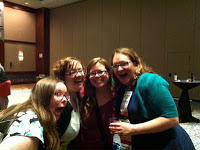
Above, a photo with Abby on the left, and a photo with Angie, Kellie, and Sophie on the right. And to round out what was a really great, great event, of course we needed a team photo:
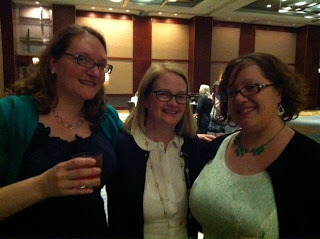
I do believe this is the only photo of Sophie, Liz, and myself all together.
Takeaways
Now that this post has been very long, I thought I'd tease out a few of the biggest event takeaways for me this go around.
There was incredible presence by youth services librarians at ALA. I paid attention to this because of all of the discussions about youth services being sort of the forgotten element of librarianship and how it doesn't get the recognition that other "sexy" topics in the field do. But you know. I watched people like Melissa Depper and Marge Loch Wouters, among others, make things happen. They got attention and I am so happy for that. Marge sums it up in one of her wrap up posts.
There is never enough time to do what you want. I made choices in presenting at ALA -- twice -- and I made a choice in being a part of a committee. The set up of Chicago worked against me, as it was impossible to get from one place to another without planning 30, 40, 60 minutes in advance. That cut into my opportunities to see and do what I really wanted to do. It's a bummer when you don't get the chance to see people do their things, especially when they've been insanely supportive of you and your things.
But even if I couldn't be supportive in person at their events, it is always great to see these people in passing. It's always great to bump into them -- even for a minute -- and say hi.
My first ALA conference wasn't very much fun when I went years ago. But as I've gotten to know more people from working, and as I've gotten to know more people from Twitter and from blogging, the more enjoyable conferences have become. Those little associations aren't so little. They matter and make a huge difference not only on the social side of things (you always have someone to grab a meal with!) but they make a huge difference in your professional development, too. I learn so much from people every day, but I feel like I learn even more when I get to see them in person. . . even if it is only for a few minutes. Because I am seeing them in action and doing things in their element.
I walked away inspired and revived. It's been a really hard summer for me professionally but I feel positive again. I'm ready to tackle things. I'm ready to implement ideas. I want to get things rolling. I want to do them on the local level -- with my kids -- and I am eager to test things out on a grander level -- on the blog, in future conferences, and so forth.
Taking personal time to recollect your head is essential and it is okay to say no to things. It's not only physically recharging, but it's good for your mind. I also think it is really important when you come home to take time to do things for yourself. Rather than dive into more committee reading, I picked up a pile of books from ALA I'd been eager to read and just read them. It felt really good.
I'm looking forward to what Midwinter in Philly brings in January.







 Related StoriesSome exciting newsYALSA's YA Lit Symposium PresentationYALSA's 2012 YA Lit Symposium Recap
Related StoriesSome exciting newsYALSA's YA Lit Symposium PresentationYALSA's 2012 YA Lit Symposium Recap
Published on July 08, 2013 22:00
July 7, 2013
So You Want to Read YA?: Guest Post by E. C. Myers (author of Fair Coin and Quantum Coin)
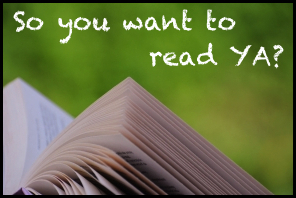
This week's post for our "So you want to read YA?" series comes to us from author E. C. Myers.

E.C. Myers was assembled in the U.S. from Korean and German parts and raised in Yonkers, NY by his mother and the public library. His young adult science fiction novels Fair Coin and Quantum Coin are out now from Pyr Books. You can find him all over the internet, but especially at http://ecmyers.net and on Twitter @ecmyers.
I was riding the New York City subway one day, standing with one forearm braced against a pole — I didn’t want to fall, but I also didn’t want to touch anything on the train — and holding onto an open YA novel with my free hand. I don’t remember exactly what I was reading, but it might have been Candor by Pam Bachorz. Anyway, I did this pretty much every day, but this time, a woman struck up a conversation with me.
Now, I’m one of those people who don’t like to be bothered when I’m reading. In fact, and this might be bad to admit, sometimes if I see an acquaintance on the train, I might pretend not to notice and maybe try to hide a little to avoid them because I would honestly rather just read — especially if I’m really hooked. My commute guaranteed me ninety minutes of reading a day, and I jealously protected my daily time with books, alone among strangers. So I wasn’t happy to be interrupted, especially by this odd question: “How old are you?”
Um. I guess I was 30-something and I told her so, and she looked surprised, which was only briefly flattering. “So you’re regressing then?” she said, eyeing the YA novel I held.
It took me a moment to figure out what she meant by that, and then I really didn’t want to talk to her. I got the vague impression that she might have been trying to chat me up, not that I had much experience at noticing things like that. But just a tip to everyone out there: If you want to pick someone up, directly or indirectly insulting their taste in books is not the best conversation starter.
I explained that actually I write books for teenagers, and no, I’m not just reading it for research, and that’s when she lost respect for me. I saw it happen! So there’s another tip. If you’re too polite to tell a stranger you aren’t interested, just tell them you’re a writer, and better yet, that you write YA.
My point is that as a reader and a writer, I encounter a lot of ignorance about YA, which is disappointing but inoffensive, but there’s also some snobbery out there. Writing science fiction and fantasy on top of YA is a kind of double whammy if you’re looking for your work to be understood and/or respected. (I’m not in this for respect, but having to defend your genre does get tiresome.)
So I’m overjoyed when anyone asks me to recommend a middle grade or young adult book to get started with. I almost always like talking about books (see above for the exception) and evangelizing for the ones that I love. I suppose some people intentionally avoid reading YA because they have these preconceptions about it, but I believe that anyone who claims to love reading needs to give it a chance. And one of the things I appreciate most about YA fiction is that there’s something for everyone.
Anyone who is interested in sampling YA can find at least one book that they like, whether they typically read literary fiction, science fiction, fantasy, horror, historical, romance — whatever. You name the genre, and there’s a wealth of YA fiction that falls into it, and there’s also frequently a blending of genres. (But if you like romance, you’re especially in luck, because it seems many, if not most YA books have some element of romance.) First and foremost, I believe YA is about people, and we can all relate to good characters… Unless perhaps you’re a robot, demon, mermaid, alien, vampire, werewolf, or zombie, and even so, there are books out there for you!
This variety in genre gives me some loose guidelines for recommending a title to someone, but whether you’re looking for YA or books targeted for older audiences, I think we can all benefit from reading as broadly as possible. I love books, and YA books in particular, because of the diverse experiences they offer—lives I couldn’t possibly lead in worlds that may never exist. Just keep an open mind to all the possibilities out there.
I Can’t Believe That’s YA
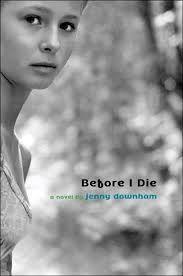
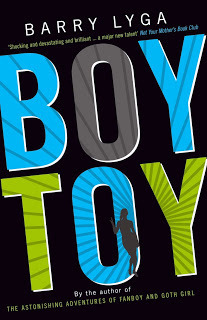
A lot of people are surprised (or shocked) at how dark/sexy/disturbing YA books can get, so if you want to quickly change your assumptions about what’s appropriate for kids, check out Boy Toy by Barry Lyga, After by Amy Efaw, Before I Die by Jenny Downham, and Dirty Little Secrets by C.J. Omololu. The most shocking thing about these books is how much truth there is in them. It’s possible that some adults don’t want kids reading them because they’d rather not accept that kids have problems like this in real life.
But I Only Read Literary Novels
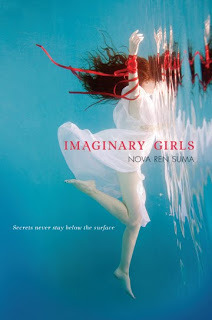
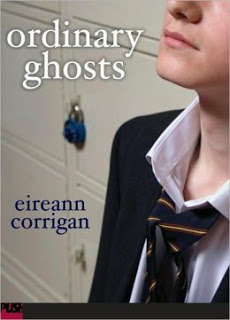
Okay… Well, by that I assume you mean you only like books that are well-written? Or something?Yeah, me too, that’s why I read YA. But if you want some books that may appeal to your refined sensibilities, get started with Looking for Alaska by John Green, Imaginary Girls by Nova Ren Suma, Hate List by Jennifer Brown, Everybody Sees the Ants by A.S. King, and Ordinary Ghosts by Eireann Corrigan.
Mind-Blowing Science Fiction, Please
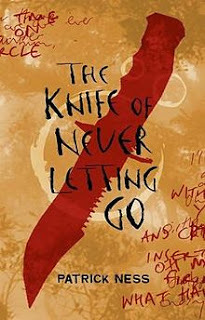
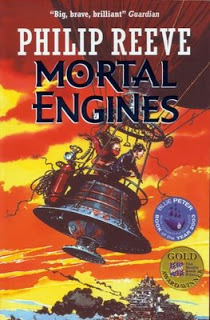
A lot of my friends prefer reading science fiction but they assume that YA SF is somehow more simplistic or less well-developed than the books they’re reading, or classics by Heinlein or Asimov. These novels will change your mind, possibly quite literally: The House of the Scorpion by Nancy Farmer, The Knife of Never Letting Go by Patrick Ness, Incarceron by Catherine Fisher, and Mortal Engines by Philip Reeve. These are also stellar examples of books that are firmly grounded in compelling and complex characters, which aren’t lost in the excellent world building.
I Don’t Really Read Much Fantasy
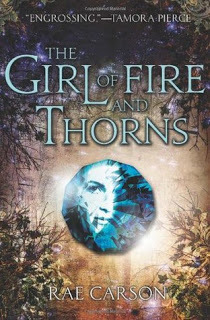
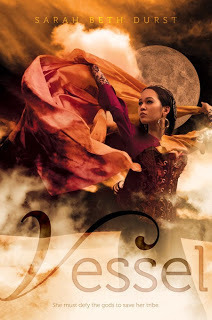
I know I’ve been guilty of saying this in the past, until I discovered that I just hadn’t found the right ones to read. Not all fantasy novels are rehashes of Lord of the Rings or epic doorstoppers that run for ten or more volumes. If you want something fresh and original, I recommend Vessel by Sarah Beth Durst, The Thief by Megan Whalen Turner, The Girl of Fire and Thorns by Rae Carson, and Graceling by Kristin Cashore.
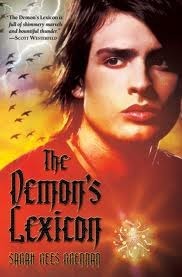
I could go on and on, recommending my favorite middle grade books (The Truth About Smekday by Adam Rex and When You Reach Me by Rebecca Stead), books for fans of the TV show Supernatural (The Demon’s Lexicon by Sarah Rees Brennan and Anna Dressed in Blood by Kendare Blake), and books with unexpected twists (Ultraviolet by R.J. Anderson and Epic by Conor Kostick).
My belabored point is that there’s at least one YA book out there that’s just perfect for you, and it would be a shame if you missed out on it and the chance to discover just how wonderful YA is. Try one of the books mentioned in this blog series, or go start a conversation with one of the teen librarians at your local library, who have read even more than I have. Just don’t begin by asking their age.







 Related StoriesSo You Want to Read YA?: Guest Post from Gwenda Bond (author of Blackwood)So You Want to Read YA?: Guest Post from Zoe Luderitz (School & Library Marketing, Social Media at Little, Brown)So You Want to Read YA? Guest Post from Stephanie Kuehn (author of Charm and Strange)
Related StoriesSo You Want to Read YA?: Guest Post from Gwenda Bond (author of Blackwood)So You Want to Read YA?: Guest Post from Zoe Luderitz (School & Library Marketing, Social Media at Little, Brown)So You Want to Read YA? Guest Post from Stephanie Kuehn (author of Charm and Strange)
Published on July 07, 2013 22:00
July 4, 2013
Vortex by S. J. Kincaid
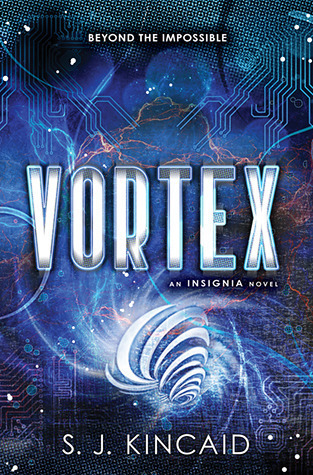
In Vortex , Tom Raines is now a Middle Company cadet, having passed his first year as a plebe in the Pentagonal Spire and judged worthy to continue his training as a combatant in the Intrasolar Forces. As his training continues, he learns more about the combatant system: how to be a tactical fighter as well as how the powers-that-be (the corporations) run it all. He also hopes to make amends with Medusa. Amid all of this, he must contend with some old enemies, as well as some new ones, as he gets drawn into some bigger fights that are well over his head.
One of the things that really impresses me about these books is Kincaid's way of writing about the corporation-run world, which is more believable in this installment than the last. It's an easy step for me as a reader to get from the covert power that many companies exercise upon our political process now to the overt power they have in Tom's future world. I wouldn't call this series a dystopia, but it does a much better job than a lot of dystopias do at postulating a believable future world built upon problems in the current one.
And because it's explained through action, not infodumps, it's quite chilling to read about. It's also not done in a heavy-handed way, in a way that makes you feel like you're Learning a Lesson. The issue can be quite complex, but Kincaid writes about it in a way that is accessible and understandable. (For more science fiction that addresses this topic, I'd recommend the excellent tv series Continuum, which is appropriate for teens as well, and even features one rather prominently.) It's also a nice change from a future world that's controlled by an authoritarian government, which is a little tired by now.
Tom is a great character. He's quite smart, but he also misses so many obvious things, making huge mistakes in the process. He's not always nice, either, even to his friends. He lets his emotions get the better of him. He chooses sometimes to exact some petty revenge instead of taking the high road, shooting himself in the foot in the process. It's all very authentic. I feel like I know kids like Tom. I feel like I was him sometimes as a teen.
Vortex tackles a lot of tough issues, but it's also very, very funny. Tom and his friends have great repartee. They prank each other constantly. At one point, another Middle company cadet gives Tom's neural processor a computer virus that makes him see imaginary gnomes everywhere. All Middle company cadets learn how to hook into a system that allows them to communicate to each other via thought, and the results are hilarious, since all thoughts are communicated, not just those they intend to send.
This is a terrific second book in the series, and just a terrific book overall. It's funny, meaningful, exciting, and well-written. I want to push these books (beginning with Insignia ) into the hands of anyone who's looking for a good SF read. It's much better than most, with a fully-realized world and a unique concept. Highly recommended.
Review copy provided by the publisher. Vortex is available now.







 Related StoriesThousand Words by Jennifer BrownGorgeous by Paul RudnickSeptember Girls by Bennett Madison
Related StoriesThousand Words by Jennifer BrownGorgeous by Paul RudnickSeptember Girls by Bennett Madison
Published on July 04, 2013 22:00
July 3, 2013
Thousand Words by Jennifer Brown
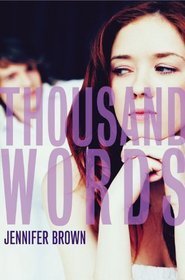
Ashleigh's boyfriend Kaleb is going to college at the end of summer, leaving her behind to get through two more years of high school. She's worried, though, his leaving means he'll be suddenly interested in other girls. More mature girls. Girls who will distract Kaleb and tear him away from her.
It's at a party when Ashleigh's friends convince her to send him a nude photo. No way would Kaleb forget her then. But when that photo gets around, Ashleigh finds she's going to lose more than just her boyfriend.
Thousand Words by Jennifer Brown explores sexting and the consequences thereof. It reminded me a lot of Susan Vaught's Going Underground (reviewed here) and for sure, it's a very contemporary topic with very real consequences for today's teens.
Brown's novel alternates in its timeline. It's set in the present during Ashleigh's court-required community service, and between these chapters are those set as flashbacks to when she chooses to send the message and how it transports through the school. Through to getting her in trouble, too. Brown masterfully weaves the backstory in with the current time and she does so while building tension in the story. It never feels like information dropping but instead, the backstory informs the place Ashleigh is in now. It's also clear early on that the romance is long gone, and it was worthwhile to see how the relationship between Ashleigh and Kaleb ended through this storytelling method, rather than getting something short and snipped about it being over.
Ashleigh's punishment is for her to do a set number of hours of research on the issue of sexting and develop pamphlets and posters to educate other students about the consequences of it. Even though it's a creative punishment and allows for Brown to offer a pat conclusion to the story, it's also sort of boring and unrealistic. See, Ashleigh has quite a bit of privilege, even if it's not acknowledged through the story. This privilege is a double-edged sword though. Her dad is a superintendant in the school distract she attends, so when the news breaks about the sexting issue, suddenly, her father's job is in jeopardy. There's a subplot about whether or not the community will push for her father to resign, but I think because of his position, Ashleigh's punishment is less severe than it could have been (and thus, less interesting to read about). Maybe that's an unfair assessment, but because this plot has been done before and done quite well in Vaught's book, there's been a standard set.
There is, of course, a budding romance in this novel, and it happens between Ashleigh and another teen who is spending time in community service. Except, Mack won't let on why he's doing time in service. Eventually he does let Ashleigh in, but even that feels a little underwhelming in execution. He offers Ashleigh a way to reconsider her position and even forces her to check her privilege, which was what she needed in order to carry on with her life. It hadn't been easy to go back to school and deal with being called a slut and a whore, of course.
Thousand Words certainly has appeal and it's well-written. It's another addition to the shelf of quality books tackling important and everyday challenges of being a teen which readers have come to expect of Jennifer Brown. That said, it didn't have quite the sparkle to it that Susan Vaught's title did, and maybe it comes down to the fact that Ashleigh never quite had a voice of her own. It's not that she's dependent upon the actions of everyone else in the book -- she's not -- but rather, she's not entirely memorable as a character. All we know of her is that she runs periodically, that she spends time in thrift stores once in a while, that she's an athlete, and that, yeah, she's the girl who send a naked photo of herself to her boyfriend. Beyond that, we don't get to know her on a deeper level, nor do we come away with a bigger picture of what her future may hold, other than she's willing to stand up for herself. In the end, I wanted a better sense of who this girl was, but instead, I was left with a little bit of a didactic message about how one mistake doesn't ruin your life. Also, of course, the message about how many teens participate in sexting and how it's going to be an issue infiltrating teen lives as long as cell phones with camera capabilities exist.
Thousand Words is available now from Little, Brown. Review copy received from the publisher.







 Related StoriesGorgeous by Paul RudnickSeptember Girls by Bennett MadisonThe Savage Fortress by Sarwat Chadda
Related StoriesGorgeous by Paul RudnickSeptember Girls by Bennett MadisonThe Savage Fortress by Sarwat Chadda
Published on July 03, 2013 22:00
July 2, 2013
The Savage Fortress by Sarwat Chadda
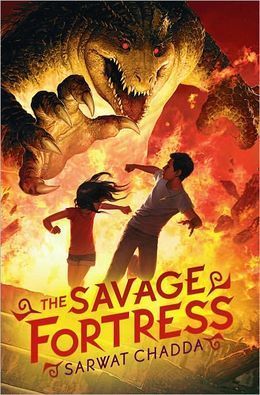
Thirteen year old Ash Mistry, along with his little sister Lucky, is visiting his aunt and uncle in India for the summer. Though he's of Indian descent, he doesn't feel much of a connection to the place, having grown up in England. Actually, he kind of wishes he were back in England anyway, since the heat in India is killing him and there's nothing much exciting going on.
And then his uncle is summoned to the home of Lord Savage, a very wealthy and powerful man with connections to Indian antiquities. Savage offers his uncle - an archaeologist - a job, but the uncle is wary and ultimately refuses, despite the promised huge paycheck. Ash, who had been wandering the fortress, is unlucky enough to stumble upon Savage's secret - he has rakshasas (demons) in his employ, and Savage's offer of employment to Ash's uncle is not what it seems. Savage's actual aim is to release Ravana, an ancient demon king, who he hopes will grant him immortality.
Ash's discovery sets Savage and his rakshasas after him, and what follows is an action-packed adventure as Ash, Lucky, and a band of allies - including a rakshasa named Parvati who has her own vendetta against Ravana - fight to stay one step ahead of Savage. Ash - a chubby nerd - finds he has hidden powers, both in terms of character as well as magic.
Aside from the inclusion of Indian mythology, which is refreshing, the story itself is fairly generic. I found myself disengaging quite a lot once the first portion of the story had passed, and I can't really blame narrator Bruce Mann, who does a fine job. I suppose I've just read this story all too often - the loner kid discovers he has hidden powers and is able to avert the end of the world through magic and a few plucky friends. It's well told and exciting enough, but doesn't have the oomph that would propel it to an above average read for me.
All that said, for kids who haven't yet lived enough years to grow weary of these stories (after all, they're the audience, not adult me), The Savage Fortress is a solid choice. I liked it about as well as I did the Percy Jackson stories, to which it's a natural readalike. Hand this to the kids who can't get enough of mythology and have already read all of Riordan's books. (Loki's Wolves by Marr and Armstrong is another likely readalike, though I've yet to read it. Surprisingly, I haven't seen a huge crop of middle grade mythology novels aside from Riordan's, and it makes me wonder if Riordan has cornered the market on it.)
Audiobook provided by the publisher.







 Related StoriesDelilah Dirk and the Turkish Lieutenant by Tony CliffGorgeous by Paul RudnickSeptember Girls by Bennett Madison
Related StoriesDelilah Dirk and the Turkish Lieutenant by Tony CliffGorgeous by Paul RudnickSeptember Girls by Bennett Madison
Published on July 02, 2013 22:00



